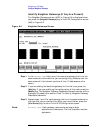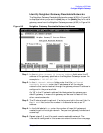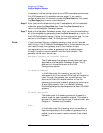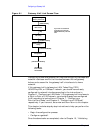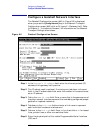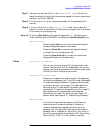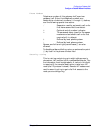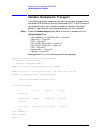
Chapter 9 143
Configuring a Gateway Half
Configure a Gatehalf Network Interface
Step 7. Tab down to the next field. In the Transmission speed field, either
leave the default or enter the transmission speed in bits per second as a
number from 1200 to 64000.
Step 8. If this is a dial link, enter the phone number of this gateway half’s
partner.
Step 9. If this is a dial link, in the Security string field, either leave the
default, or enter a value that HP nodes must use to gain dial link access
to the node you are configuring.
Step 10. Press the
[Save Data] key. Proceed to Appendix 10 , “Validating and
Cross-Validating with SYSGEN,” and press the
[Validate Netxport] key.
Optional Keys
Press the
[List NIs] key to list the names and types of
already configured network interfaces.
Press the [Delete NI] to remove a configured network
interface from the configuration file.
Press the [Read Other NI] key to call up a previously
configured Network Interface name.
Fields Partner’s IP address
This is the internet protocol (IP) address of the node
that will be the other half of the gateway half you are
configuring. Enter the address in the same format as on
the Point-to-Point Configuration screen.
Partner’s IP subnet mask
Allows you to specify the subnet mask of this gateway
half’s partner gateway half. The 32-bit mask is grouped
in octets expressed as decimal integers and delimited
by either a period (.) or a space. The mask identifies
which bits of an IP address will be used to define a
subnetwork. To determine these bits, you first need to
estimate how many subnetworks and nodes per
subnetwork you need. For details on deriving an IP
subnet mask, see Chapter 2 , “Networking Concepts.”
Home NI name
The home NI name will be used by the software to
determine which network address is the source
network address when packets are sent over the
gateway half. The home NI name cannot be either a
gateway half or loopback NI name, but it can refer to
any other type of network interface (LAN, Token Ring,
Point-to-Point, FDDI, or X.25 network interface).




